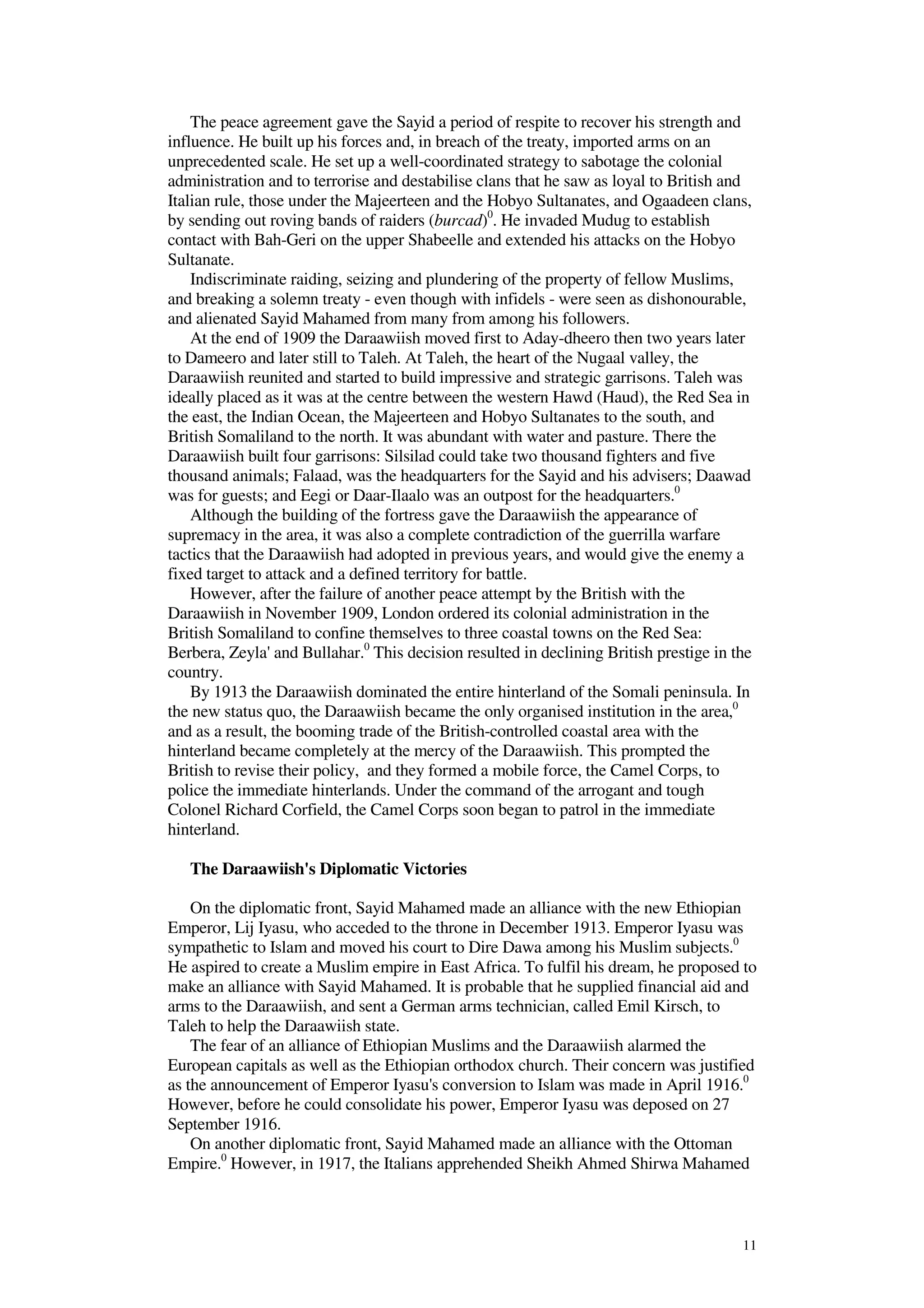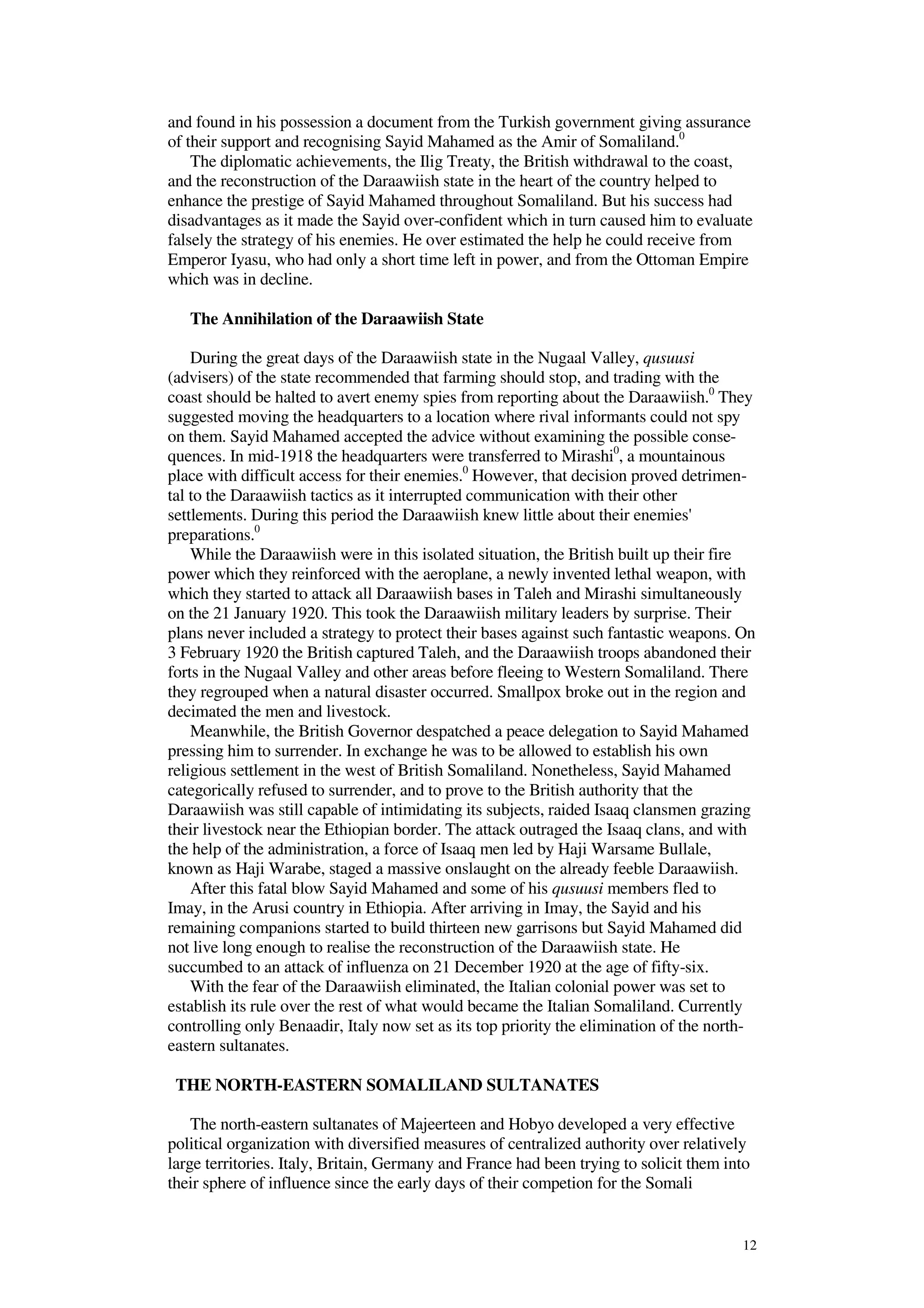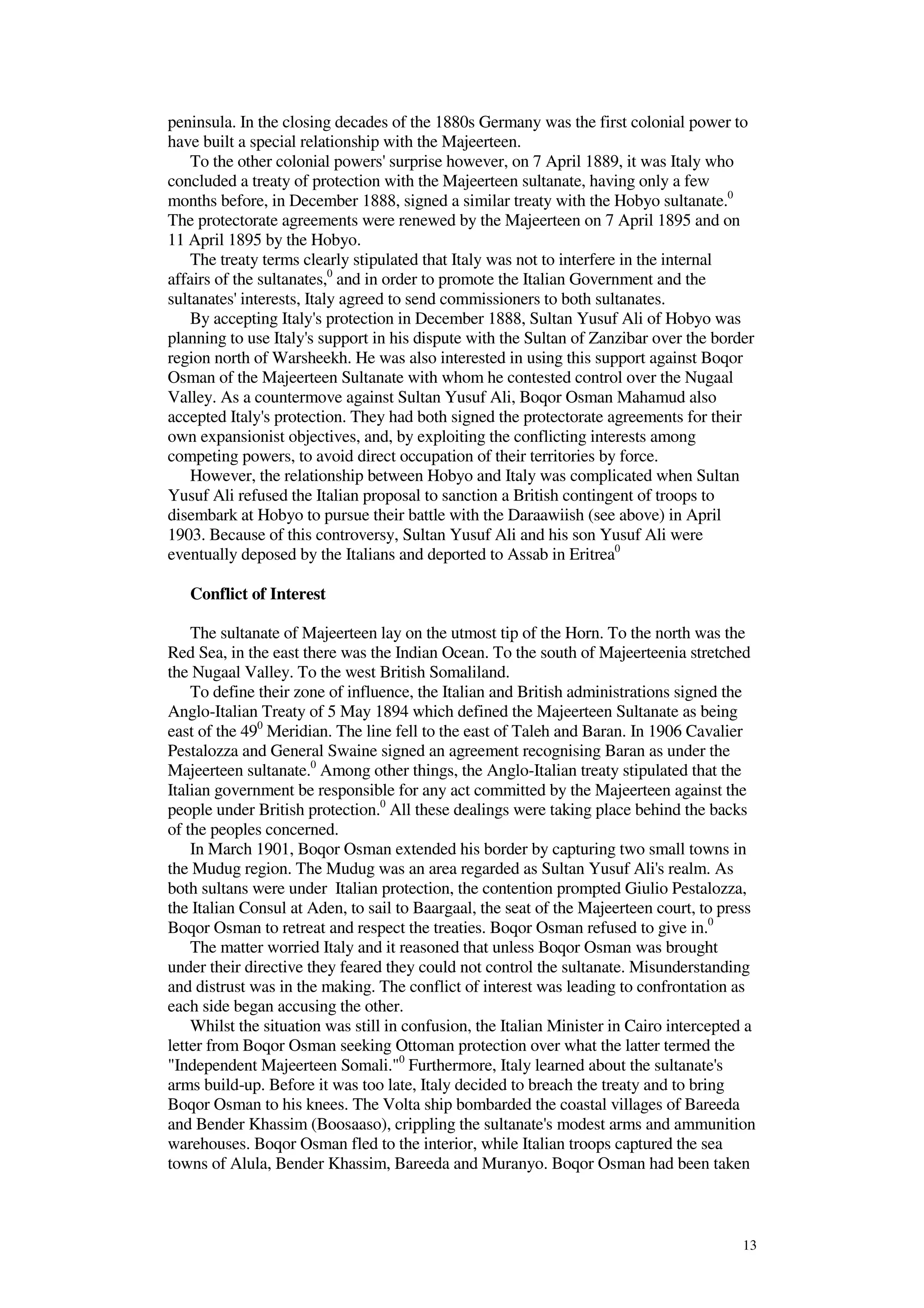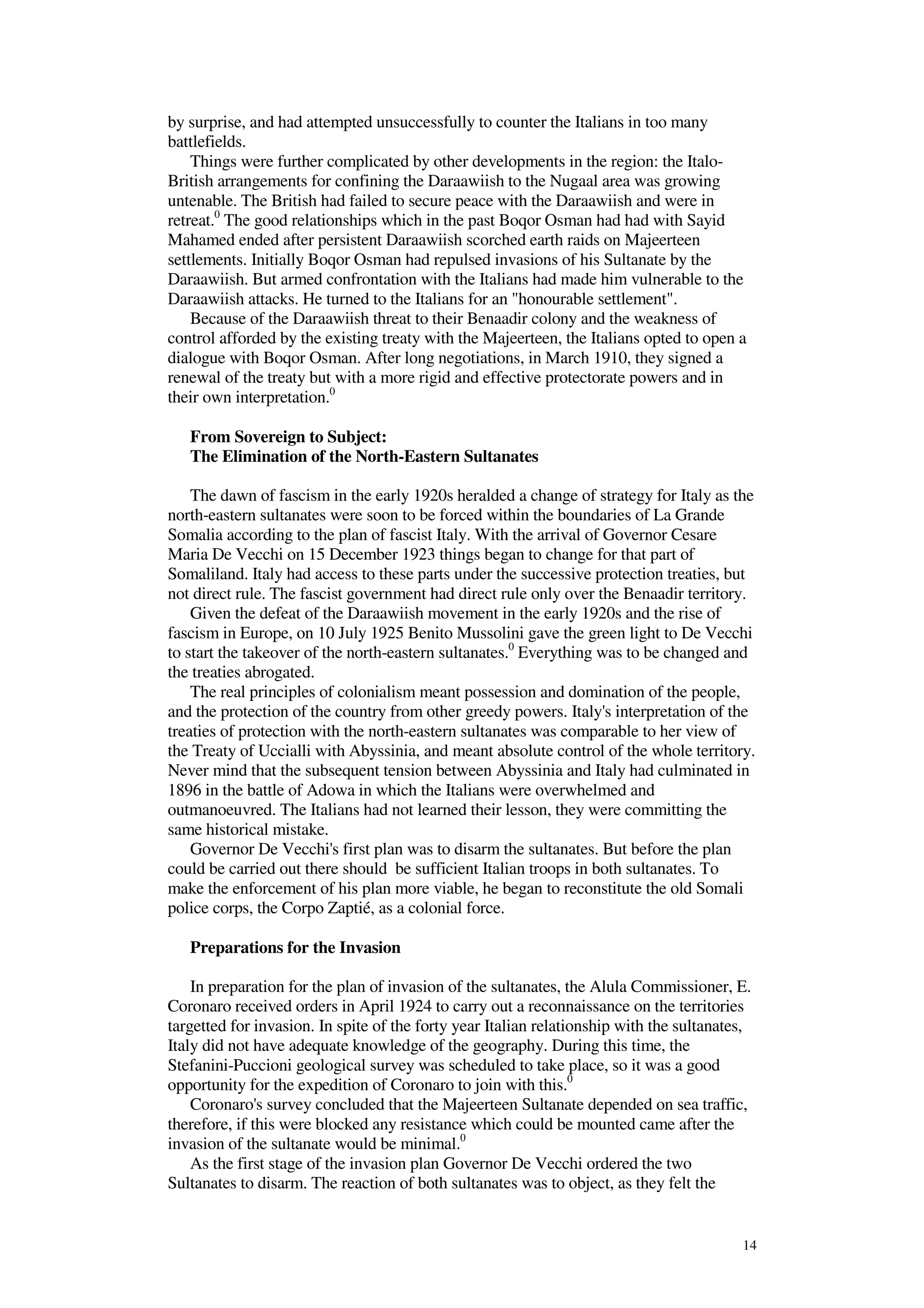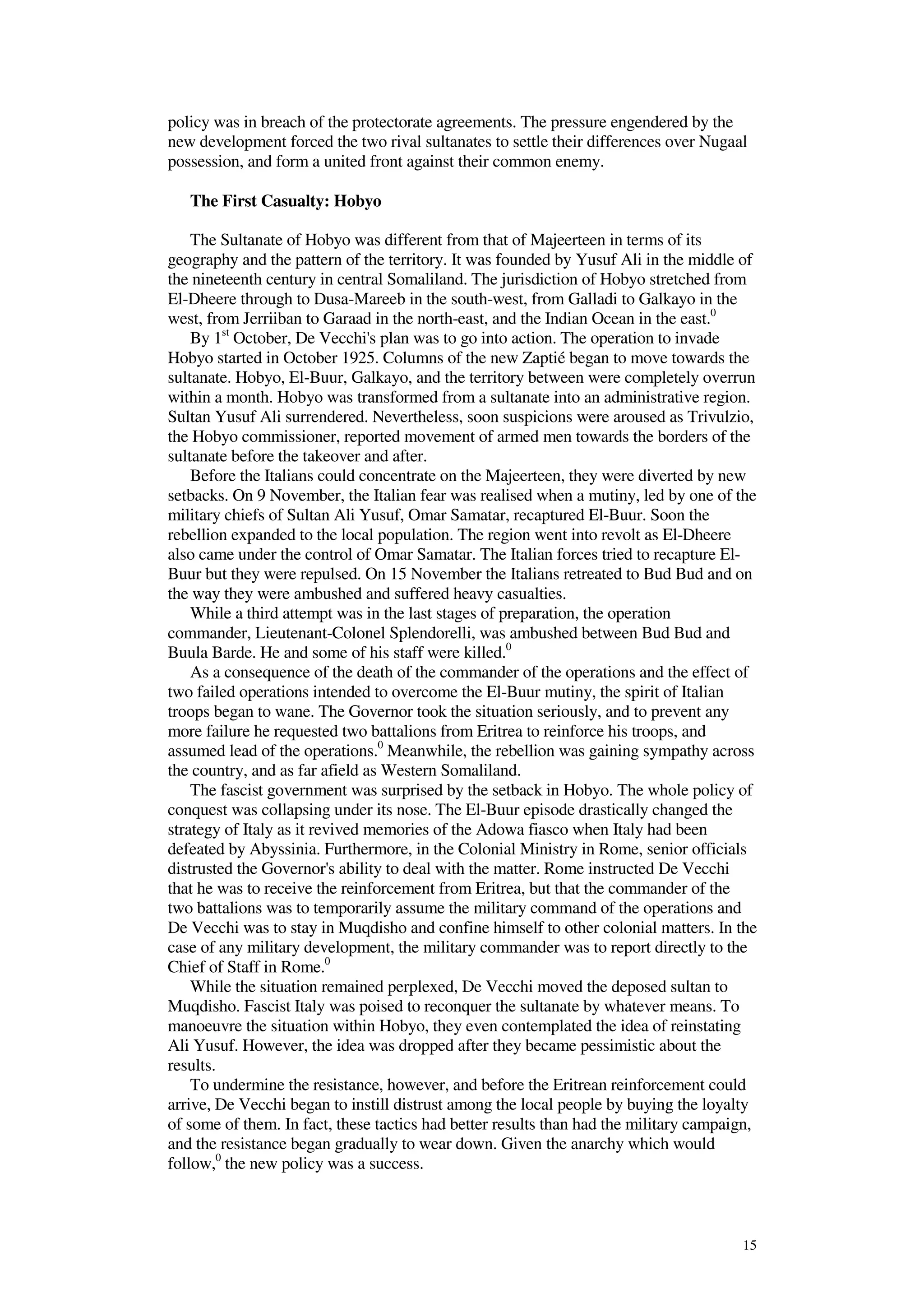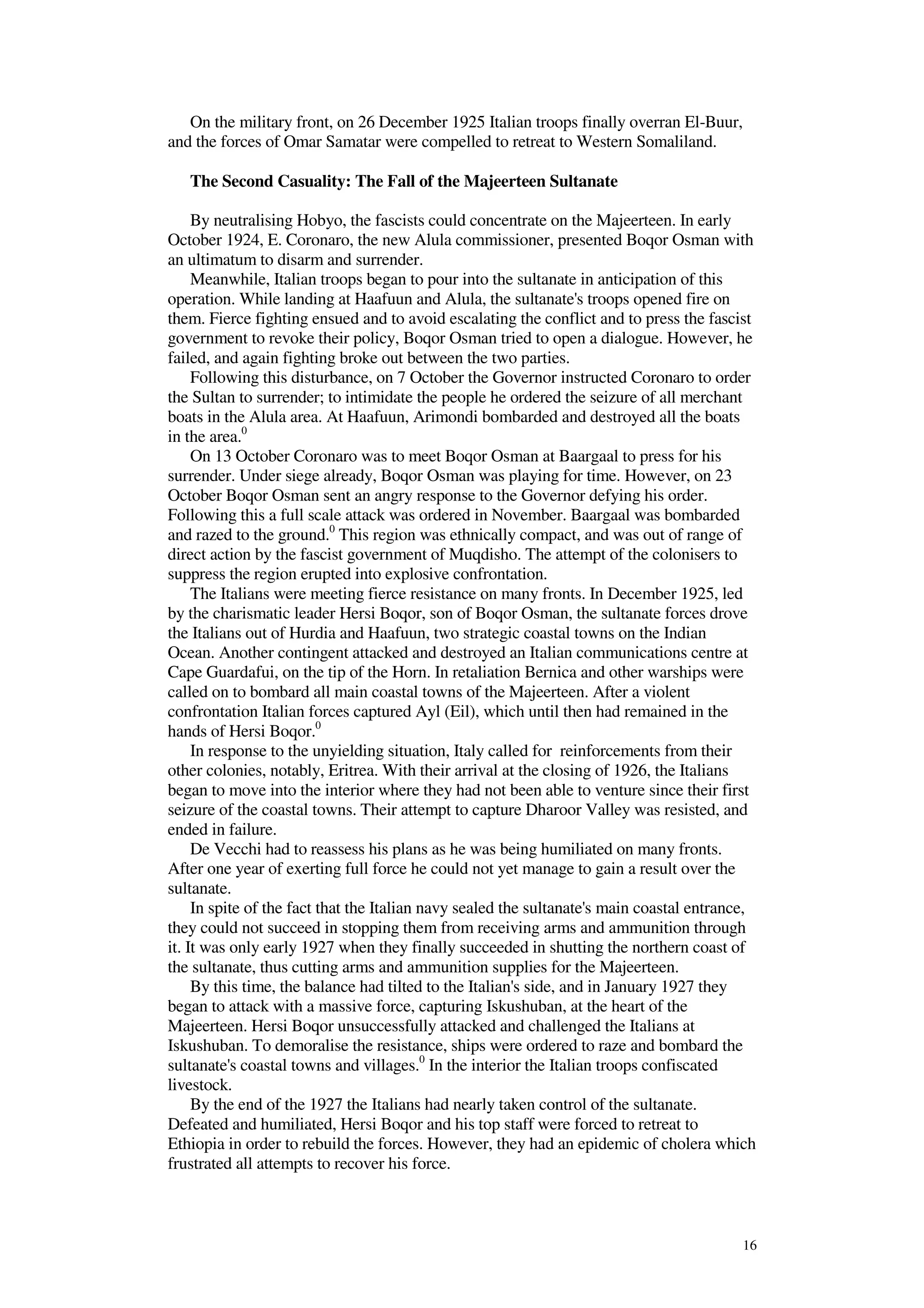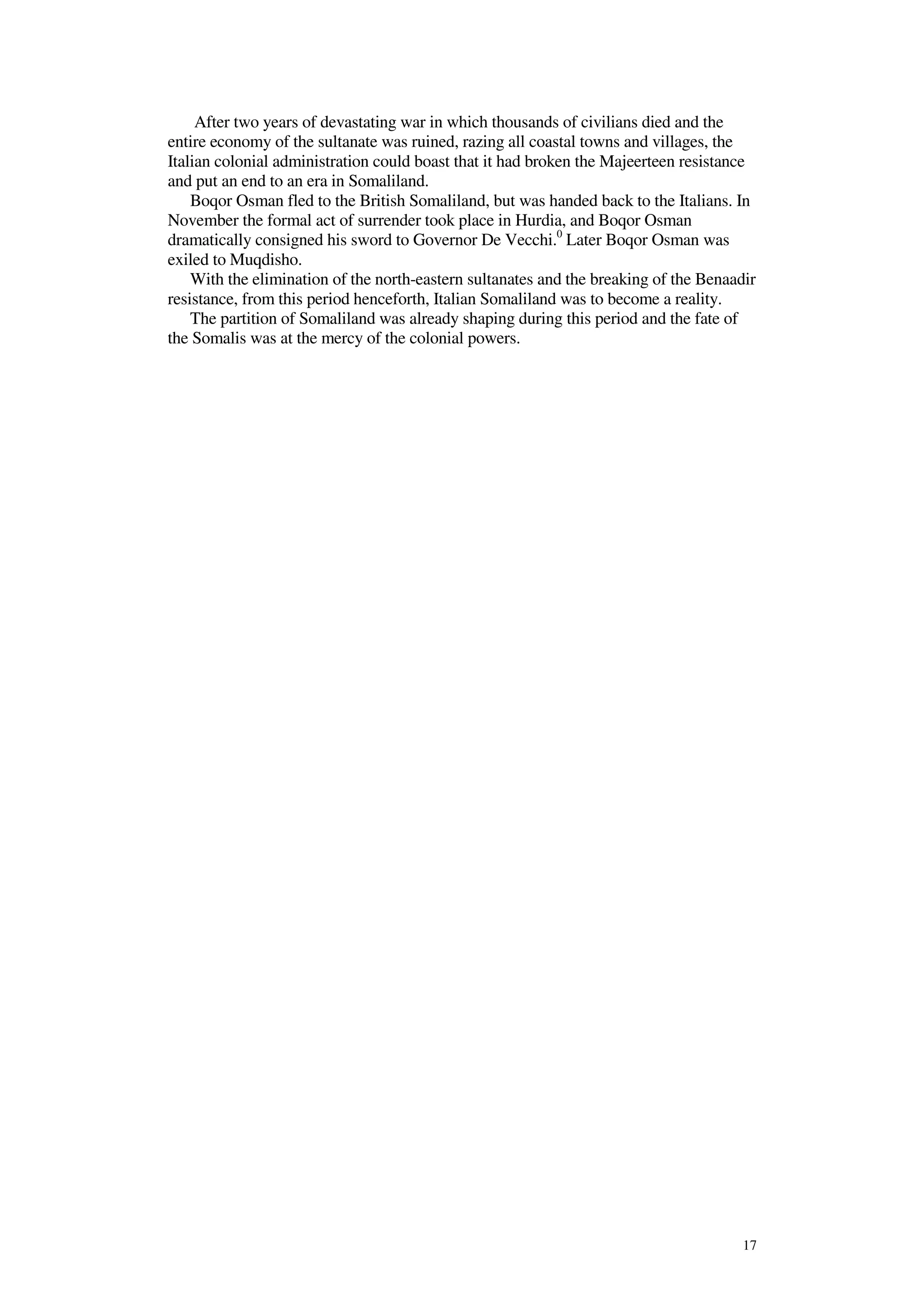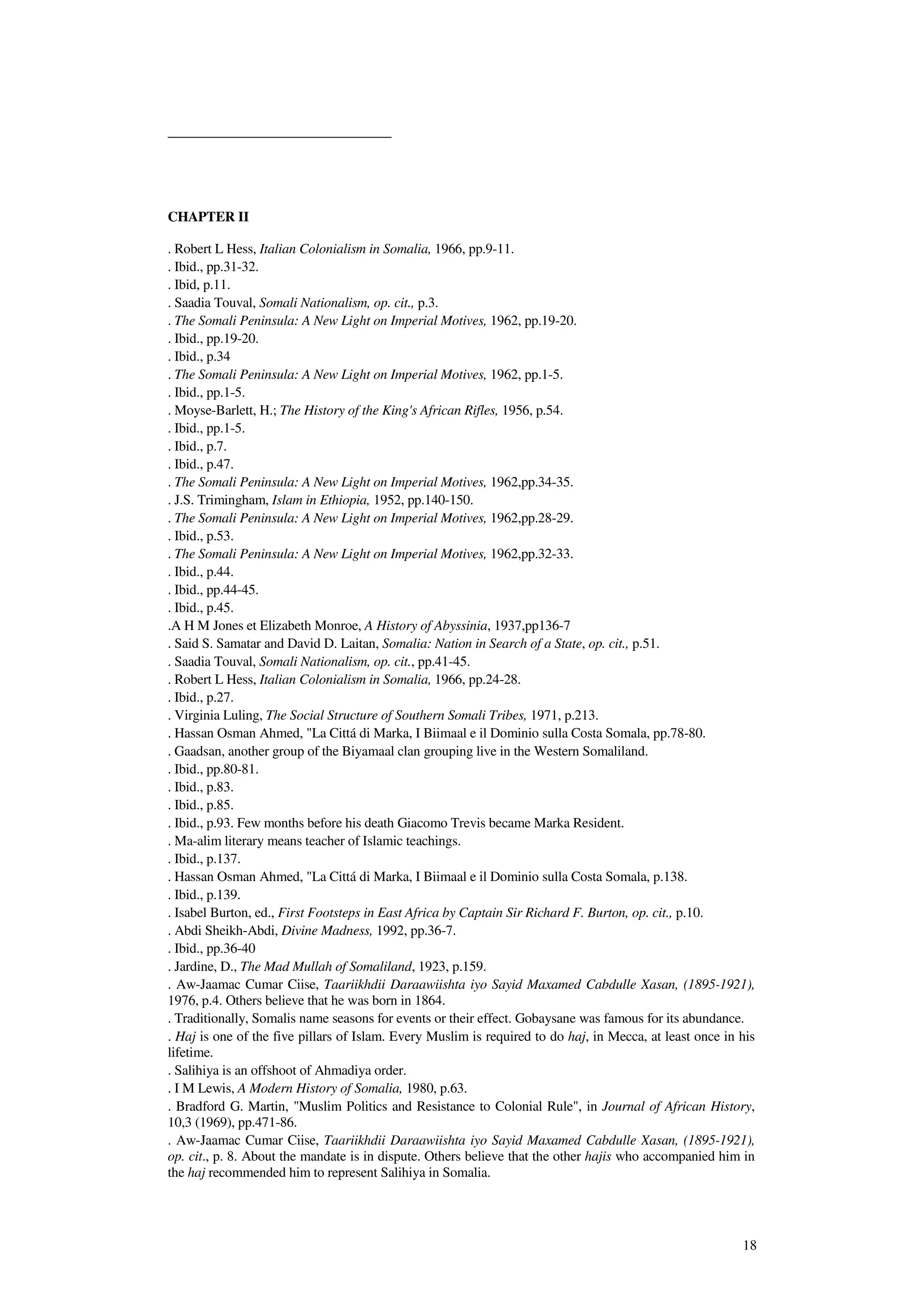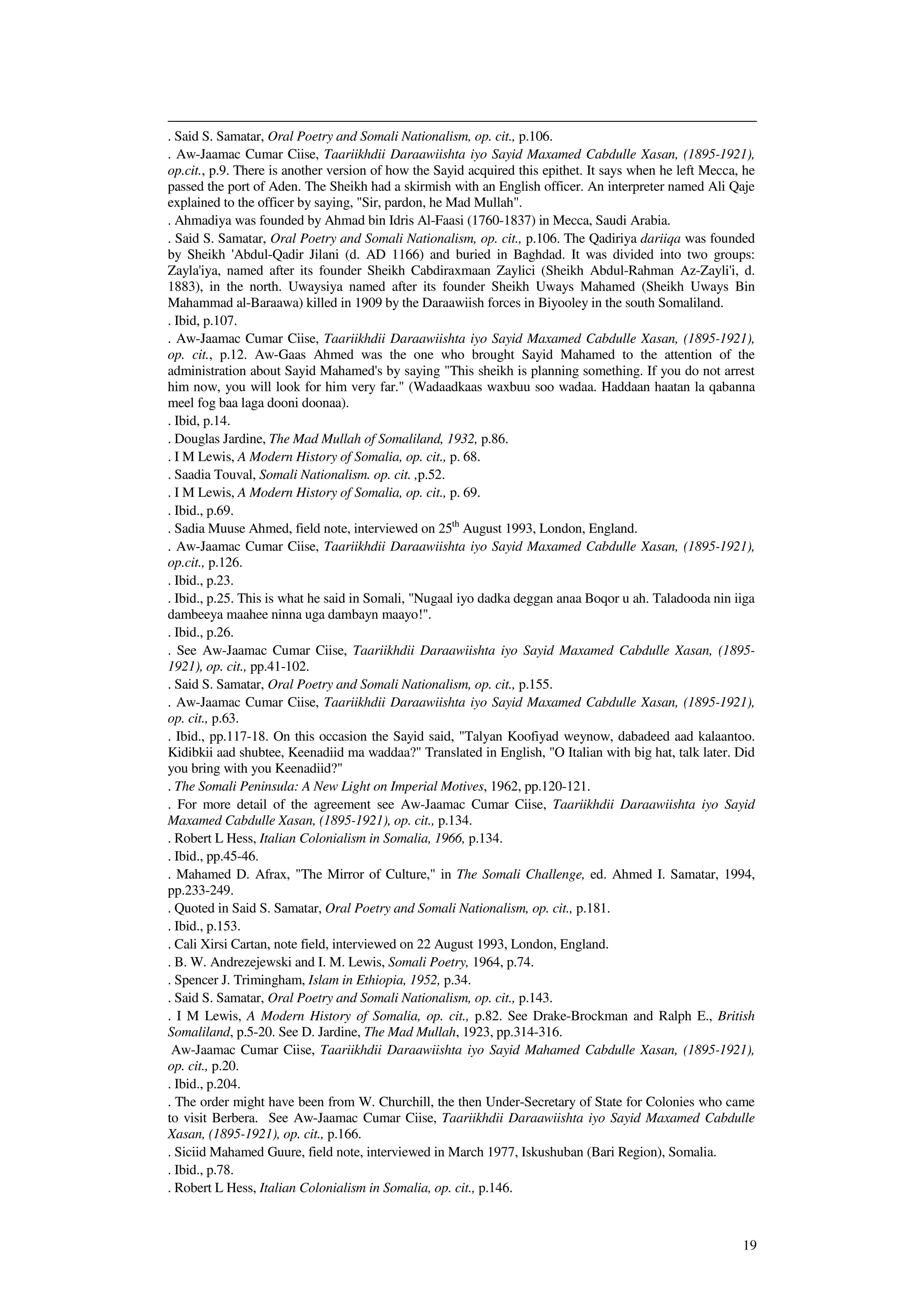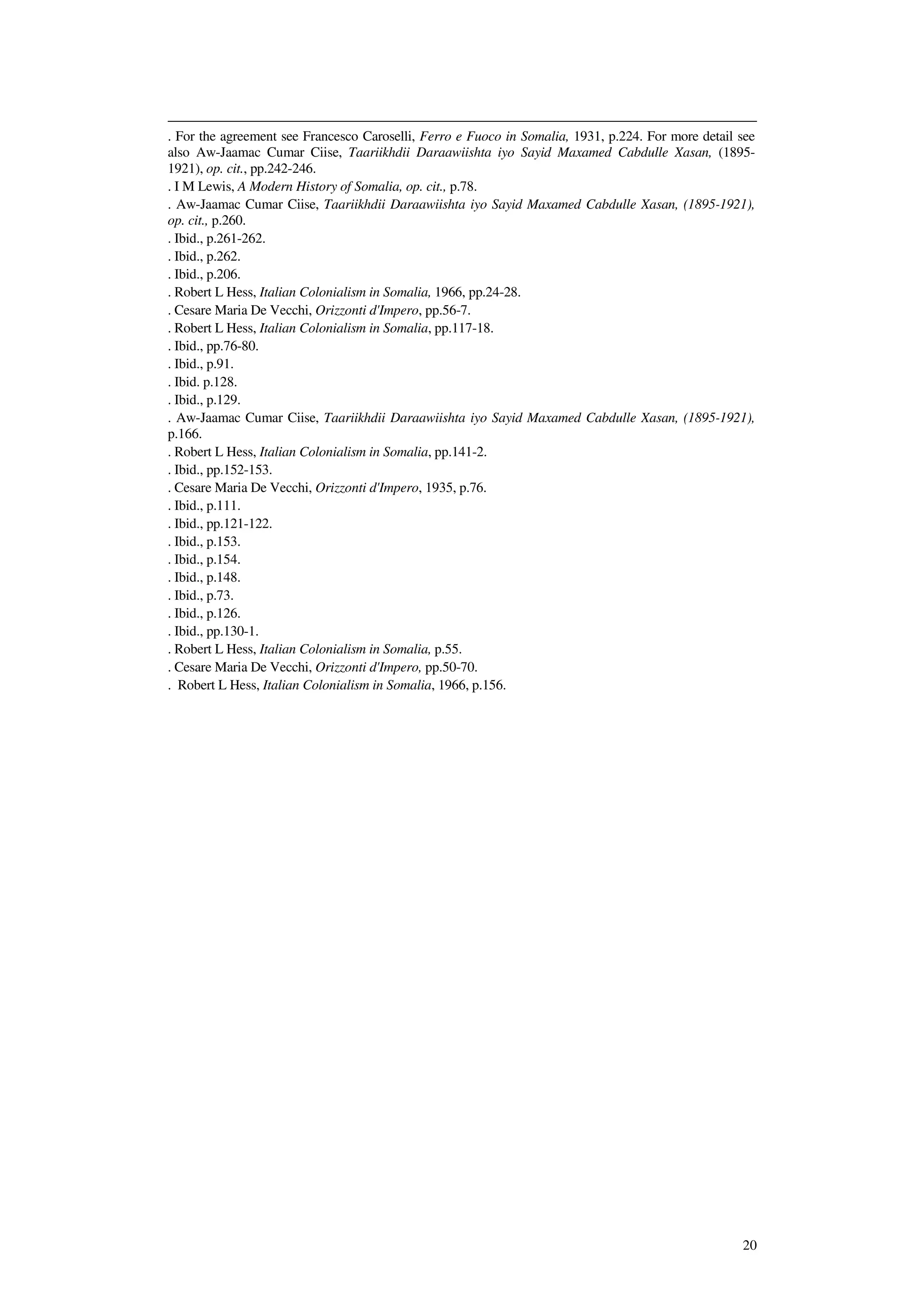The document summarizes European colonial intrusion into Somalia in the late 19th century and the resulting Somali resistance. It describes how various European powers - Britain, France, Italy, and Abyssinia - established control over different parts of Somalia through treaties and military campaigns. This led to the partitioning of Somali territories among these powers. The document also details the initial Italian colonization of southern Somalia and the resistance put up by the Biyamaal and Wa'daan clans against the Italian attempts to control their lands, which included blockading the port city of Marka for many years. The resistance remained disorganized for over a decade before taking a more organized form under new leaders in 1906-1907.


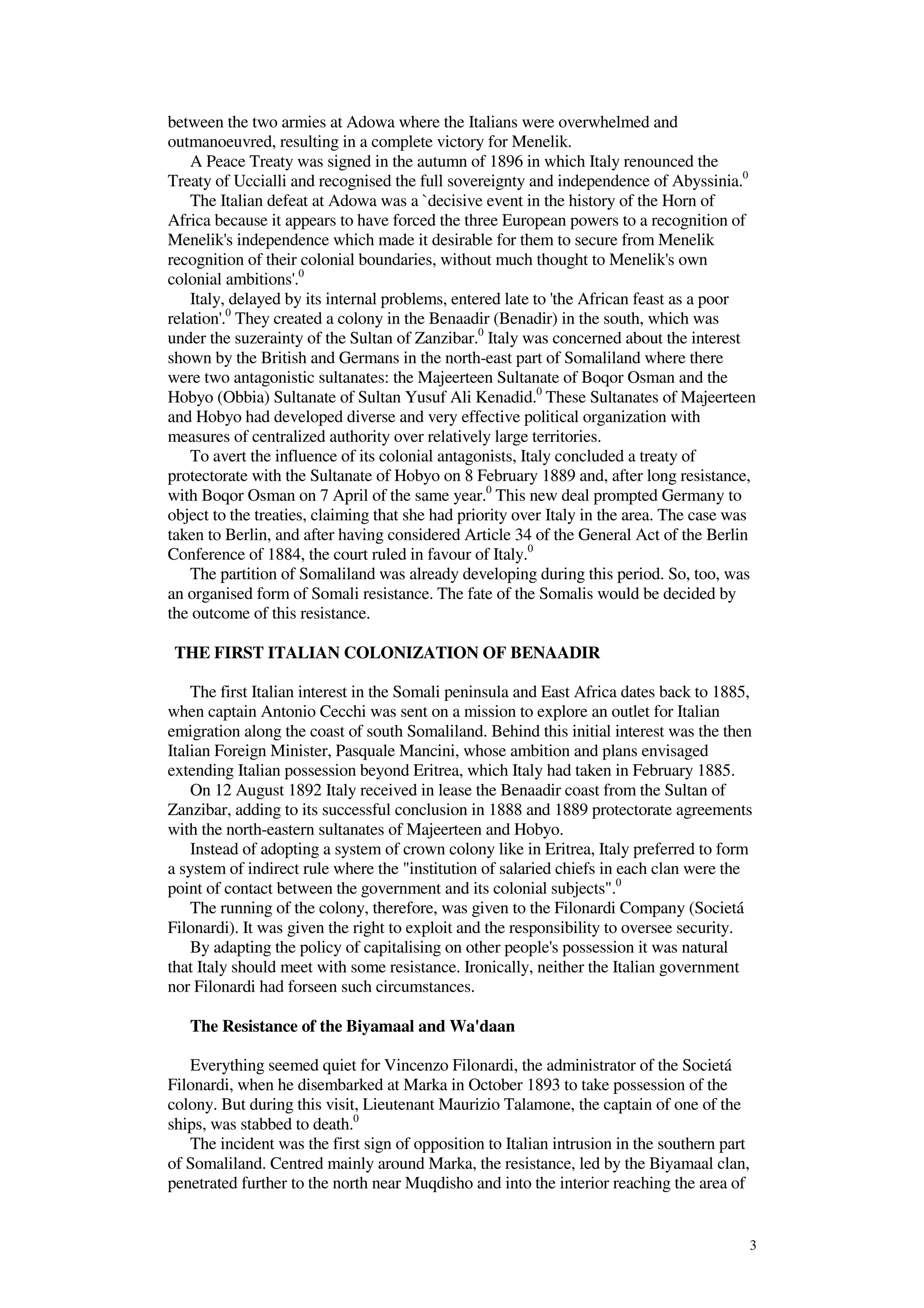

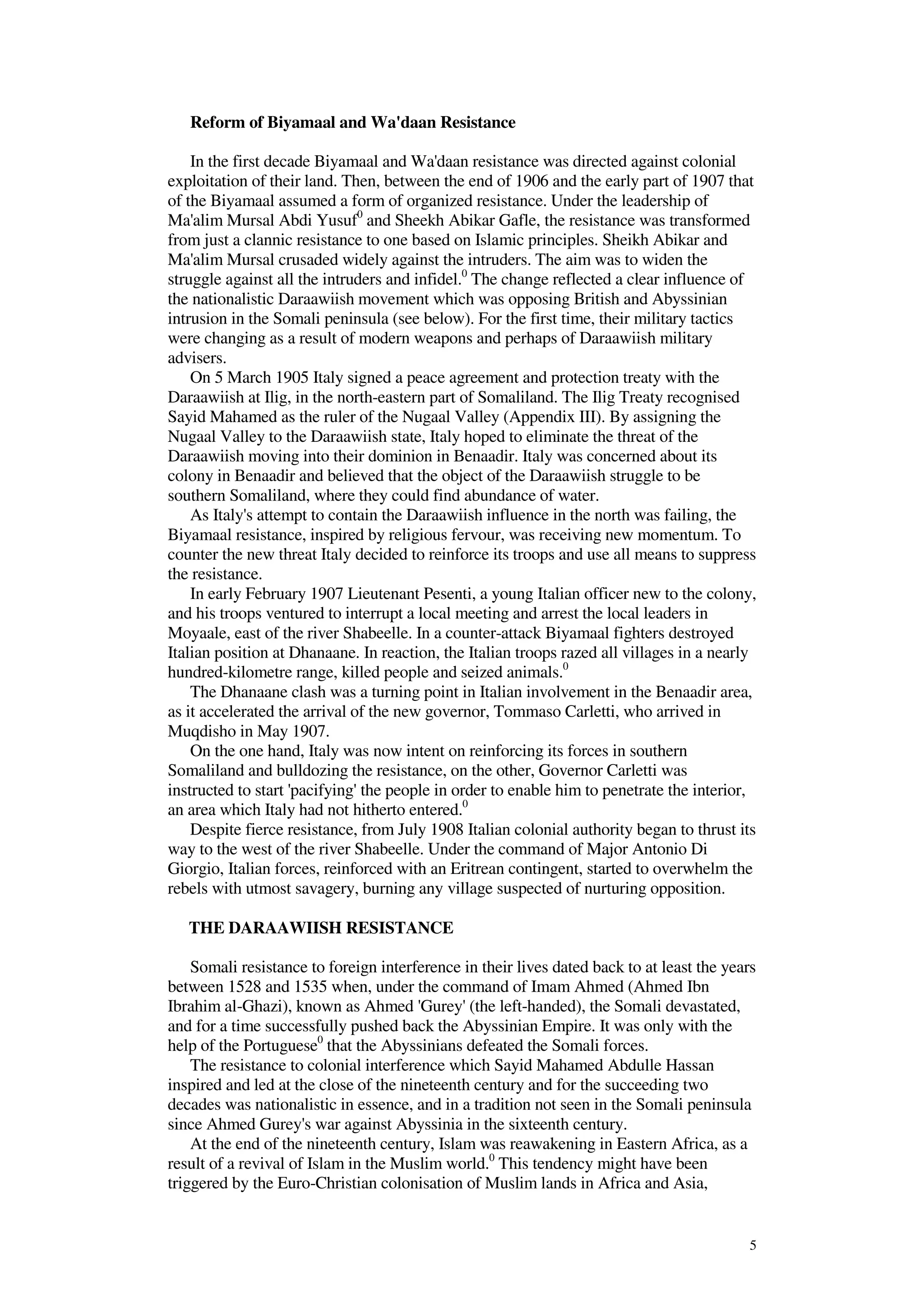
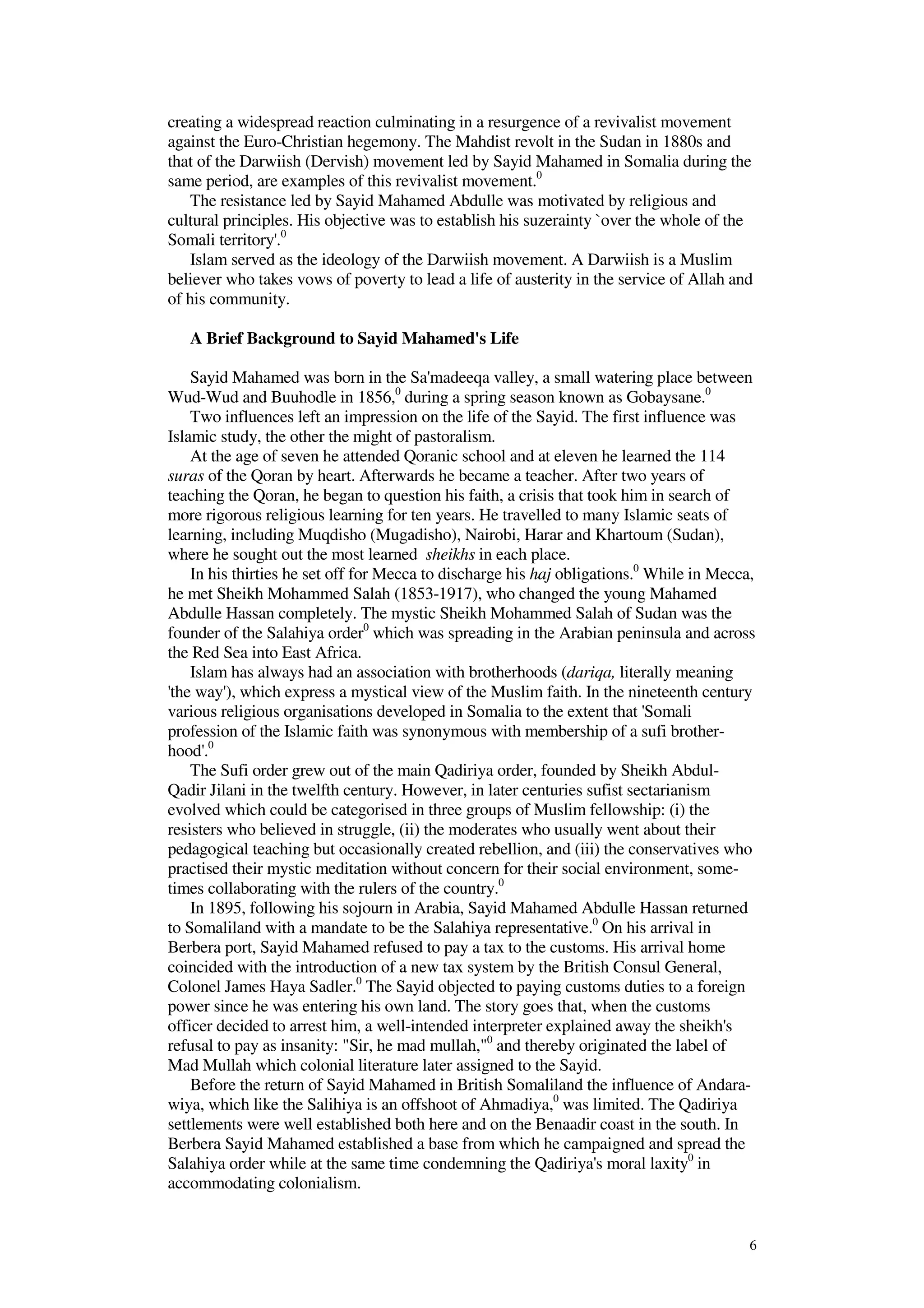
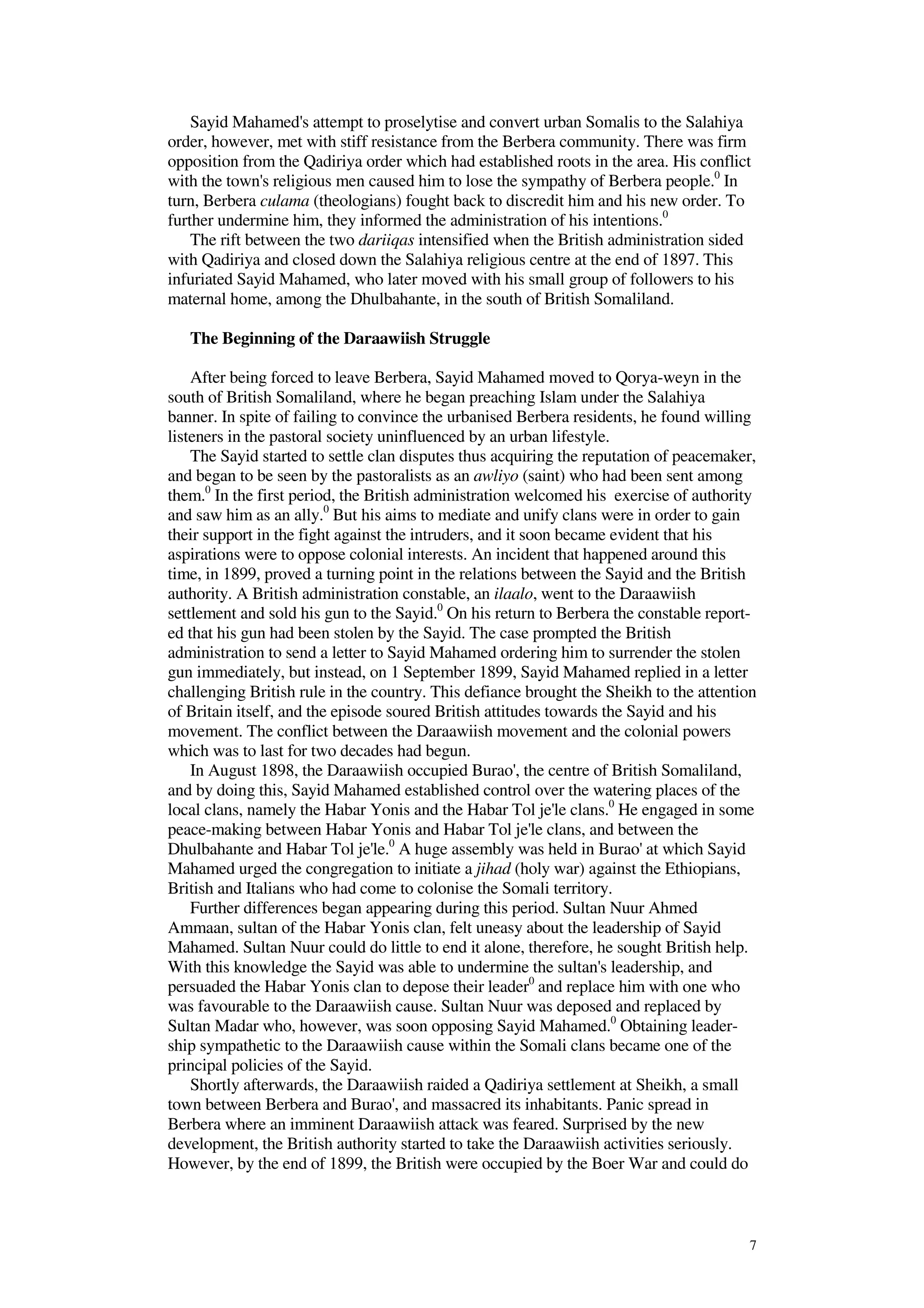
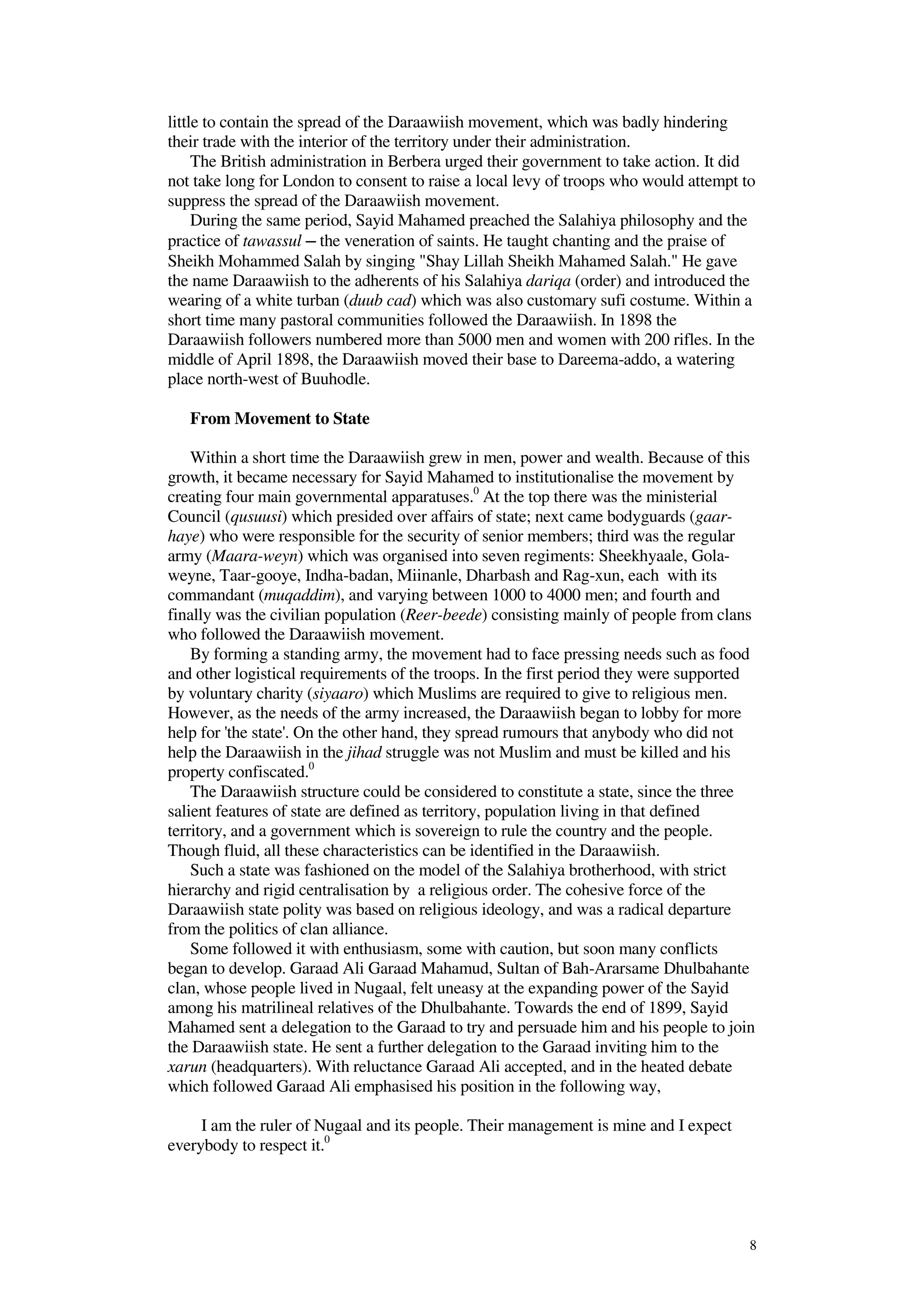
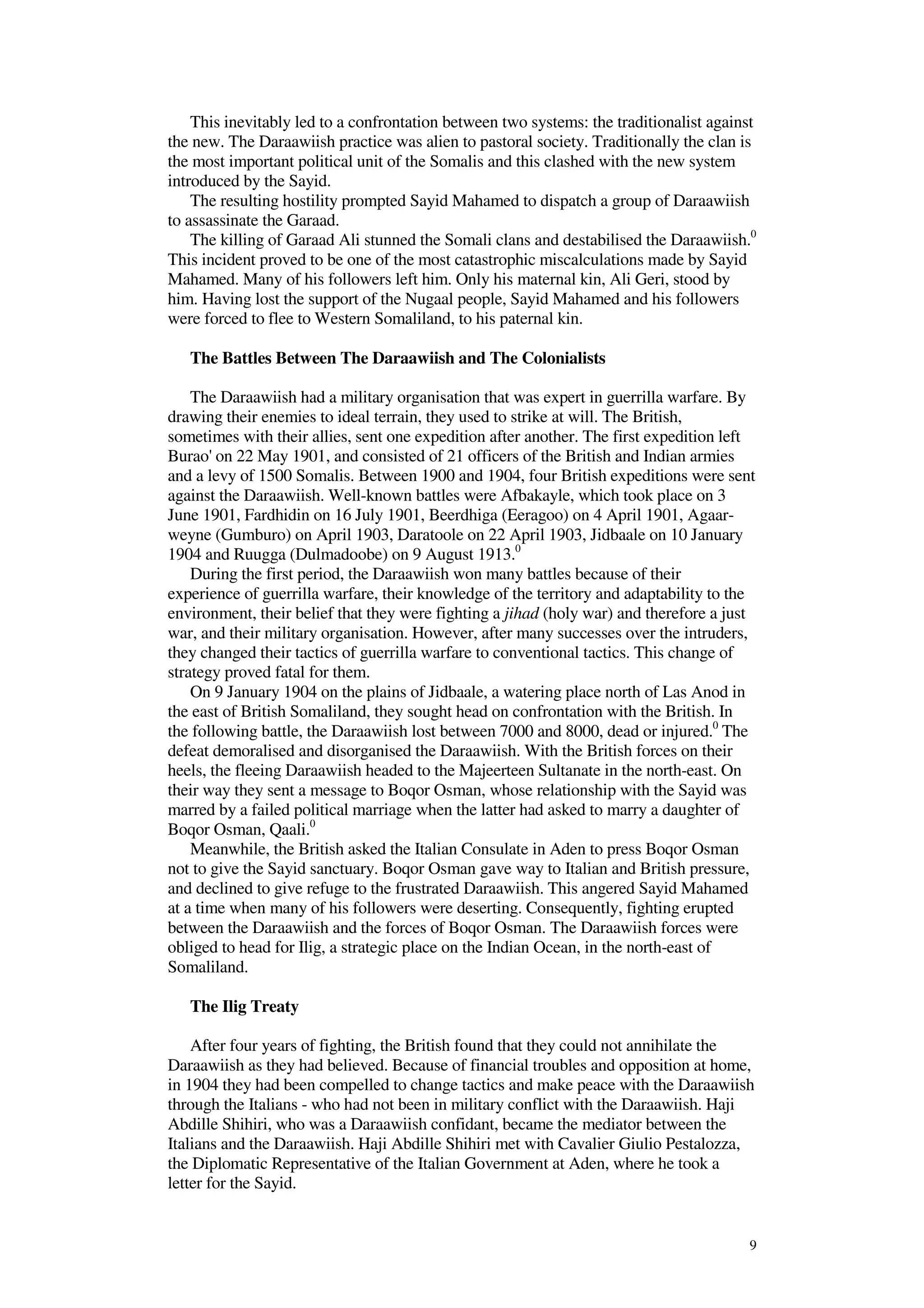
![10
Craving respite, the Sayid accepted negotiation with the Italians who proposed that
he rule the territory from Ayl and Garaad on the Indian Ocean to Nugaal in the interior.
The agreement included a condition to release Sultan Yusuf Ali Kenadid, Sultan of
Hobyo (Obbia), who had been deposed and imprisoned by the Italians after he refused
to let British forces disembark at Hobyo with the intention of attacking the Daraawiish
from the east while other British forces engaged with the Daraawiish at Cagaar-weyne
(Gumburo) on 17 April 1903. As a result of his refusal, Sultan Yusuf Ali was deported
to Assab in Eritrea in 1903.0
After heated negotiations an agreement was reached on 5 March 1905. Giulio
Pestalozza signed for Italy. At Berbera on the 24th
March 1905, a provisional
Agreement was signed by the British and by representatives of the Daraawiish,
declaring amongst other things, that the Agreement between Italy and the Daraawiish
was in accord with the views of the British government.0
The Ilig Treaty recognised Sayid Mahamed as leader of a mini state in the Nugaal
Valley, under the protection of Italy (Appendix III). It also accorded him religious
liberty and freedom of trade, except in arms and slaves.0
By assigning the Nugaal Valley as a Daraawiish state, Italy hoped to eliminate the
threat of the Daraawiish to influence and support revolt in their own domain of Bena-
adir.0
However, on receiving the news of the Daraawiish' status, the Biyamaal and
Wa'daan clans rebelled against Italian rule. Only after Italy bombarded Marka did the
Italians subdue the Biyamaal uprising.0
Master of Eloquence
Knowing that the colonialists could not be defeated by force alone, Sayid Mahamed
began to change strategy by beginning to use words as arms. Just as words, spoken or
written, have been the most powerful means of communication of mankind,0
he
consummately and skilfully used the medium of Somali verse. He repeatedly sought to
gain in verse what he could not succeeded in acquiring with arms. When he lost a
battle, he "dipped into his reservoir of rhymes to encourage his shattered army."0
He
designed his verse to enhance his cause, to encourage his followers or scorn and
discredit his enemies. However, by scorning his enemies, he sometimes preached the
pastoral ethos excessively like an "epigram that borders on the obscene."0
The period in Ilig was, by concensus, the period during which he composed his best
poems: dextrously using the Somali language which is well noted for its richness of
vocabulary;0
using the medium of poetry as high powered propaganda warfare, Sayid
Mahamed became a "literary master".0
As poetry is the principle medium of mass
communication, his mastery of the art won him the reputation of being the greatest
Somali poet, and earned him the description "master of eloquence"0
from one modern-
day admirer.
The Sayid appealed to a traditional code of ethics that he knew would
strike a responsive chord in the [hearts of those who heard them]. The
notion of unbending defiance in the face of calamitous circumstances
was a theme he often stressed in his poems... Yet these tactics,
designed to hold the ranks of the faithful together, concealed the real
shift in strategy that the Sayid was initiating in the light of grim
realities.0
Long years of adversity gave vitality to Sayid Mahamed's personality. He was
persisting in the face of overwhelming odds. In spite of his totalitarianism and storming
character, his tyranny was directed towards a noble end0
as his objective was to get rid
of colonial power.
The Reconstruction of the Daraawiish State](https://image.slidesharecdn.com/colonialintrusionandthesomaliresistance-200926142146/75/Colonial-intrusion-and_the_somali_resistance-10-2048.jpg)
